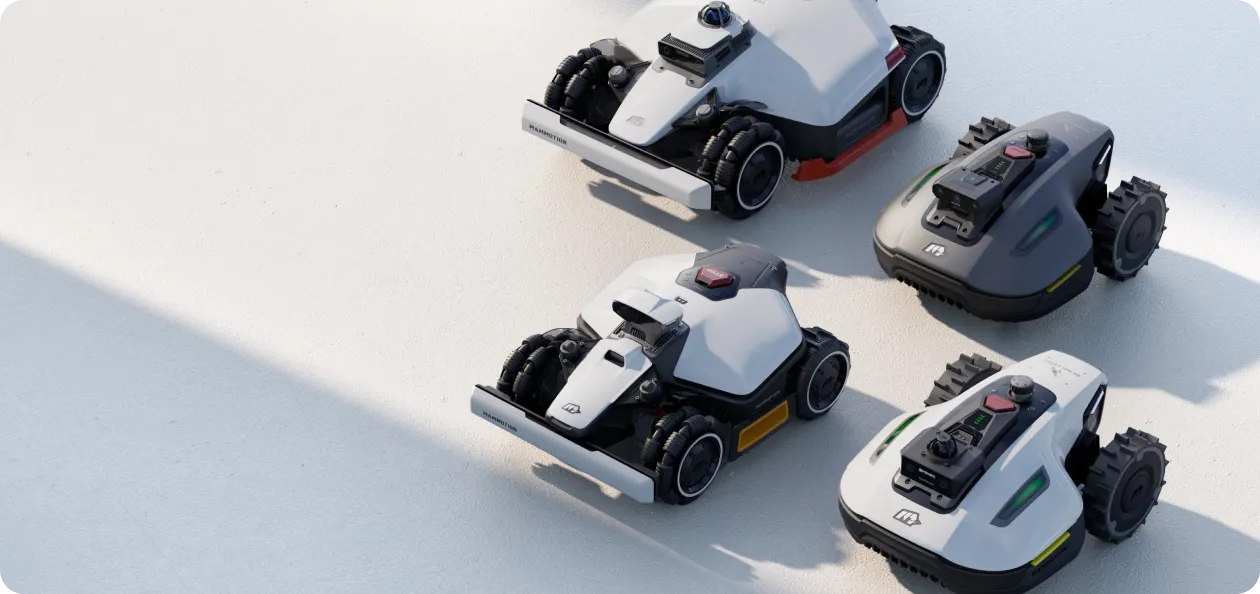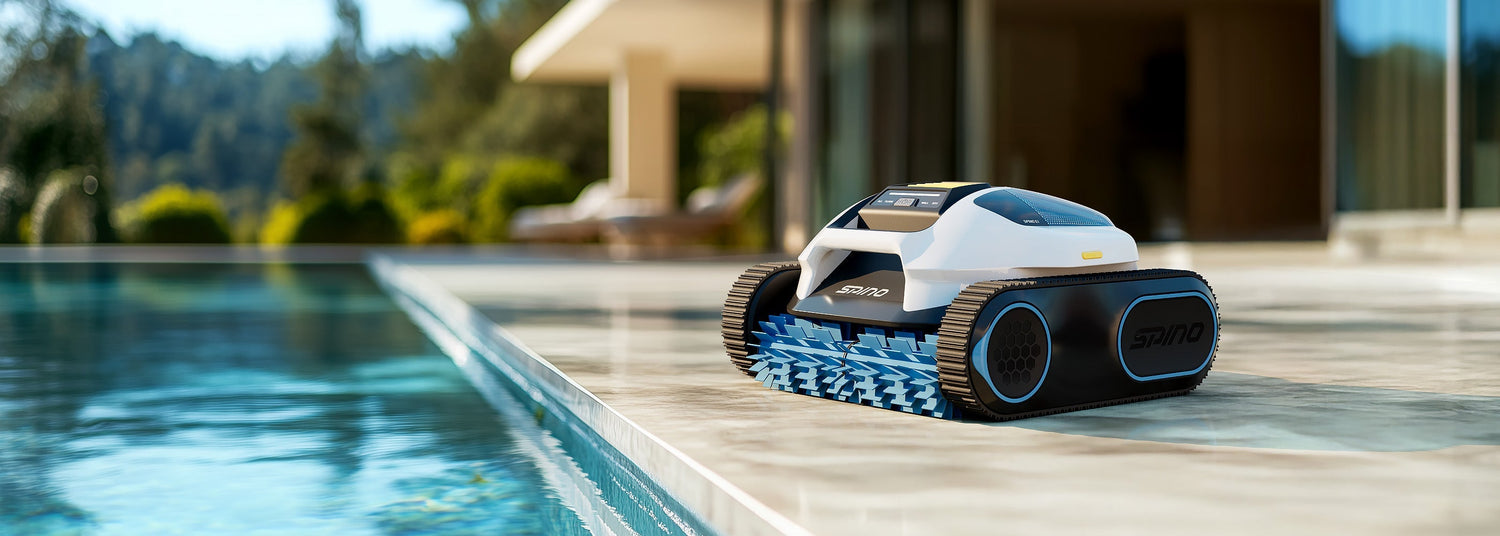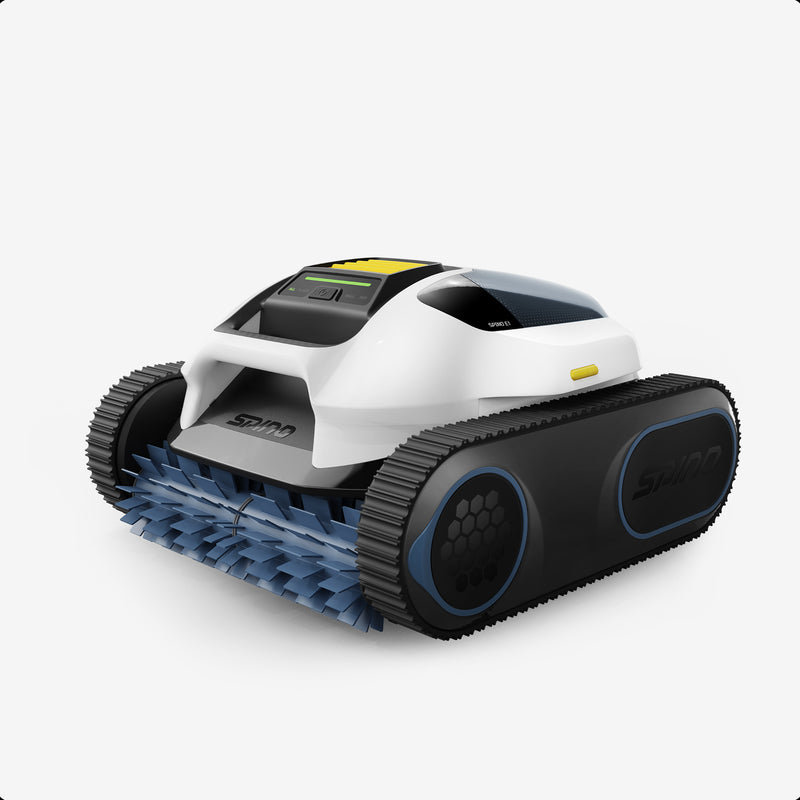Robotic pool cleaners are known for making pool maintenance easier, smarter, and more hands-free than ever. But let’s be honest — no product is perfect.
If you're considering investing in one, it’s only natural to ask: “What are the downsides?” And the truth is, while robotic cleaners offer plenty of advantages, there are some disadvantages you should be aware of before you buy.
In this article, we’ll break down the most common drawbacks of robotic pool cleaners — and explain when they actually matter, who should care, and how to avoid making the wrong choice for your pool.
Key Disadvantages of Robotic Pool Cleaners
1. Higher Upfront Cost
Robotic pool cleaners tend to cost significantly more than suction or pressure-side models. Entry-level units often start around $400–$600, while high-end models can exceed $1,500. This price gap can be a deal-breaker for some pool owners, especially if your pool is small or only used seasonally.
However, many robotic cleaners pay for themselves over time through lower energy use and reduced wear on your pool’s filtration system. It's more of a long-term investment than a quick fix.
2. Requires Electricity or Charging
Unlike suction cleaners that run off your pool pump, robotic cleaners require an external power supply or internal battery. While most are safe and energy-efficient, you still need to manage cords or charging cycles.
For some users, this means placing a power unit near the pool or remembering to recharge a cordless unit. If you prefer a “set-it-and-forget-it” system with zero user input, this might be an inconvenience.
3. Can Struggle With Large or Heavy Debris
Some robotic cleaners — especially budget models — don’t handle oversized debris like acorns, sticks, or heavy wet leaves very well. Their intake ports may clog, or their filter baskets may fill up too quickly.
If your pool is surrounded by trees or collects unusual debris, you’ll need a model with extra-large debris baskets and strong suction. Otherwise, you might find yourself having to manually pre-clean.
4. Needs Regular Filter Cleaning
While robotic cleaners reduce your manual labor in the pool, they still require you to empty and rinse the filter — sometimes after every use, depending on debris volume.
Top-load filters have made this task easier, but if you forget to clean them, performance can drop quickly. Some users find this maintenance repetitive, especially during peak pool season.
5. May Get Stuck in Complex Pools
Budget robotic cleaners often rely on random movement patterns or lack smart navigation. In complex pools with irregular shapes, steps, ledges, or drain covers, they may get stuck, spin in circles, or miss key areas.
More advanced models (like the SPINO E1) include multi-sensor navigation and anti-tangle systems, but they come at a premium. If your pool has many obstacles, you'll need to invest accordingly.
6. Electronics Can Wear Out Over Time
Because robotic cleaners contain motors, sensors, and circuit boards, they’re more complex than traditional cleaners — and like any machine, parts can fail. Over time, exposure to chemicals and sun may degrade seals or electronics.
Most units last 5–7 years with proper care, but repairs outside of warranty can be costly. That’s why it’s important to buy from a reputable brand with solid support and extended warranty options.
When You Need to Consider Robotic Pool Cleaner Downsides
Not every disadvantage is a dealbreaker — it all depends on your pool, your habits, and your expectations. Because for most homeowners, it is still worth buying a robotic swimming cleaner. Here's when robotic pool cleaner drawbacks actually become significant:
1. You Have a Tight Budget or a Small Pool
If you're working with a limited budget or your pool is small and easy to maintain manually, a robotic cleaner might be more machine than you need. In these cases, a basic suction cleaner could get the job done at a lower cost — though it may require more effort from you over time.
2. Your Pool Collects Large, Heavy Debris
Pools surrounded by trees, acorns, or pine needles tend to clog smaller robotic filters quickly. If you find yourself constantly emptying the debris basket, the convenience factor wears off. You’ll either need to pre-skim your pool or invest in a unit with extra-large debris capacity and a wide intake port.
3. You Prefer a Fully Plug-Free System
If you’re looking for something you can leave in the pool all week, robotic cleaners may not be ideal. Most models are not designed for permanent submersion, and battery-powered versions still need regular charging. If that feels like a hassle, a pressure-side cleaner connected to a booster pump might better suit your lifestyle.
4. You Want Zero Maintenance
No cleaner is 100% maintenance-free — but if your expectation is “set it and forget it forever,” you might be disappointed. Robotic cleaners are low-maintenance, but they still require you to clean filters, inspect brushes, and sometimes troubleshoot navigation errors.
5. You Don’t Want to Worry About Electronics
Some pool owners prefer the simplicity of mechanical systems. If you’re wary of motors, circuit boards, or software malfunctions, you may want to opt for less automated systems — though you'll trade convenience for simplicity.
How to Minimize or Avoid These Issues
The good news? Most of the common disadvantages of robotic pool cleaners can be easily minimized — or even eliminated — by choosing the right model and following a few smart practices. Here’s how to avoid buyer’s remorse:
✅ Choose a Model With the Right Capacity
If your pool gets a lot of leaves, dirt, or heavy debris, don’t settle for an entry-level unit. Look for a cleaner with:
- Wide suction openings
- Extra-large filter baskets
- Strong suction motors
This ensures you won’t be constantly emptying the filter or needing to pre-clean manually.
✅ Prioritize Smart Navigation
To avoid getting stuck on steps, ladders, or corners, choose a cleaner with:
- Multi-sensor guidance
- Wall-climbing capability
- Anti-tangle swivel cords or cordless operation
For example, the Spino E1 Robotic Pool Cleaner uses advanced path planning and adaptive traction to clean efficiently — even in freeform pools with curves, slopes, and stairs.

✅ Consider Cordless Convenience
If cords and power outlets are a hassle for your setup, opt for a cordless robotic cleaner with strong battery life (at least 120–150 minutes per cycle). This eliminates tripping hazards and gives you more freedom in where and how you use the cleaner.
✅ Buy From a Trusted Brand With Good Support
Since robotic cleaners involve electronics and moving parts, after-sales service matters. Choose a brand that offers:
- Extended warranties
- Responsive customer support
- Accessible replacement parts
This way, even if something wears out in a few years, you won’t be left without options.
✅ Understand Your Pool and Cleaning Habits
Before buying, take a few minutes to assess:
- Your pool size, shape, and finish
- The amount and type of debris
- How often you plan to run the cleaner
Matching your purchase to your actual needs is the best way to ensure long-term satisfaction. Here is the detail about how to choose the right robotic pool cleaner for your pool.
Conclusion
Robotic pool cleaners aren’t perfect — and they’re not meant to be. Like any technology, they come with trade-offs: a higher upfront cost, occasional maintenance, and limitations in specific pool environments. But for many pool owners, the convenience, efficiency, and long-term savings far outweigh the drawbacks.
The key is to understand what you’re buying — and whether it fits your specific pool and lifestyle. By choosing a model with the right features, like smart navigation, strong suction, and easy filter access, you can avoid most of the common frustrations.
If you're looking for a solution that addresses many of these concerns right out of the box, a model like the Spino E1 Robotic Pool Cleaner is designed with real-world challenges in mind — combining performance, adaptability, and user-friendly operation.
At the end of the day, robotic pool cleaners aren’t for everyone — but for those who value less effort and more time enjoying the pool, they can be a game-changing investment.
Frequently Asked Questions
1. Are robotic pool cleaners worth the money?
Yes — for most pool owners, the time and energy saved by using a robotic cleaner justifies the upfront cost. They’re efficient, require no connection to your pool system, and often lower your long-term maintenance needs.
2. How long do robotic pool cleaners last?
Most robotic pool cleaners last between 5 to 7 years with proper care. Longevity depends on usage frequency, water chemistry, and how well you maintain the filter and internal components.
3. Can a robotic pool cleaner clean leaves and large debris?
Some models can, but not all. Entry-level robotic cleaners may struggle with heavy or large debris like wet leaves, acorns, or twigs. If your pool collects this type of debris, look for models with wide intake ports and oversized baskets.
4. Do I have to clean the robotic cleaner's filter after every use?
It depends on how much debris is in your pool. For most users, cleaning the filter after every 1–2 uses is recommended to keep suction strong and avoid clogs. Top-load filters make this task easier.
5. Can I leave my robotic pool cleaner in the water all the time?
No. Most manufacturers recommend removing the cleaner after each use to avoid long-term chemical exposure and preserve the motor and seals. Battery-powered models should also be recharged after use.
6. Do robotic pool cleaners work for all pool shapes and surfaces?
Higher-end models with smart navigation can handle irregular shapes, steps, and slopes on most surfaces, including vinyl, fiberglass, and concrete. Lower-end models may miss spots or get stuck in complex layouts.
7. What’s the biggest disadvantage of a robotic pool cleaner?
The biggest drawback is usually the initial cost. Robotic models are more expensive upfront than traditional cleaners. However, they often save you money over time through reduced energy use and lower filter pump wear.
8. How do I avoid buying the wrong robotic pool cleaner?
Understand your pool’s size, shape, and debris level first. Then, look for a model with the right filter size, navigation features, and support from a reputable brand. Reading reviews and checking warranty terms also helps.













